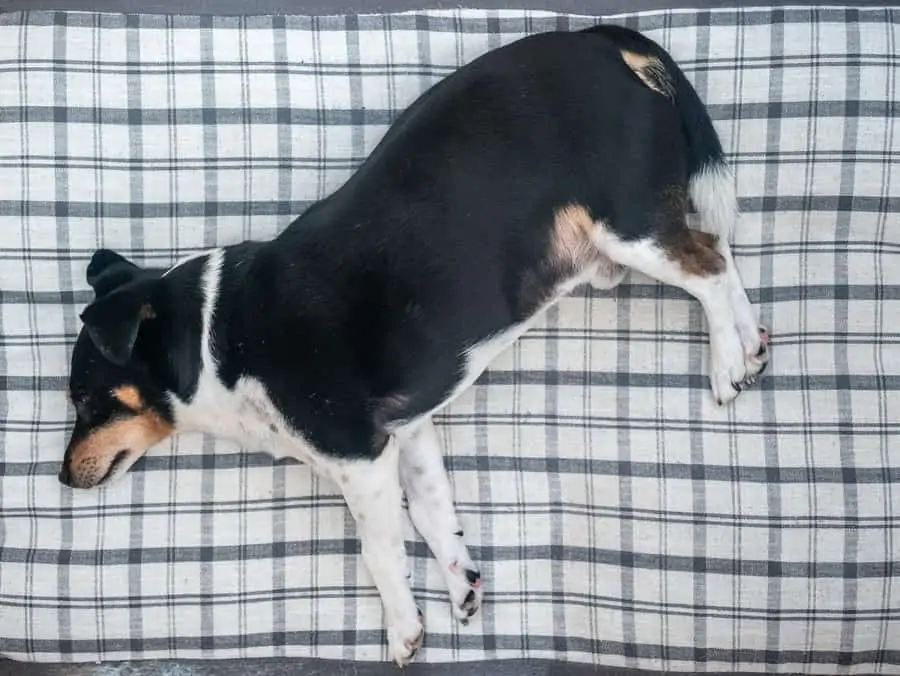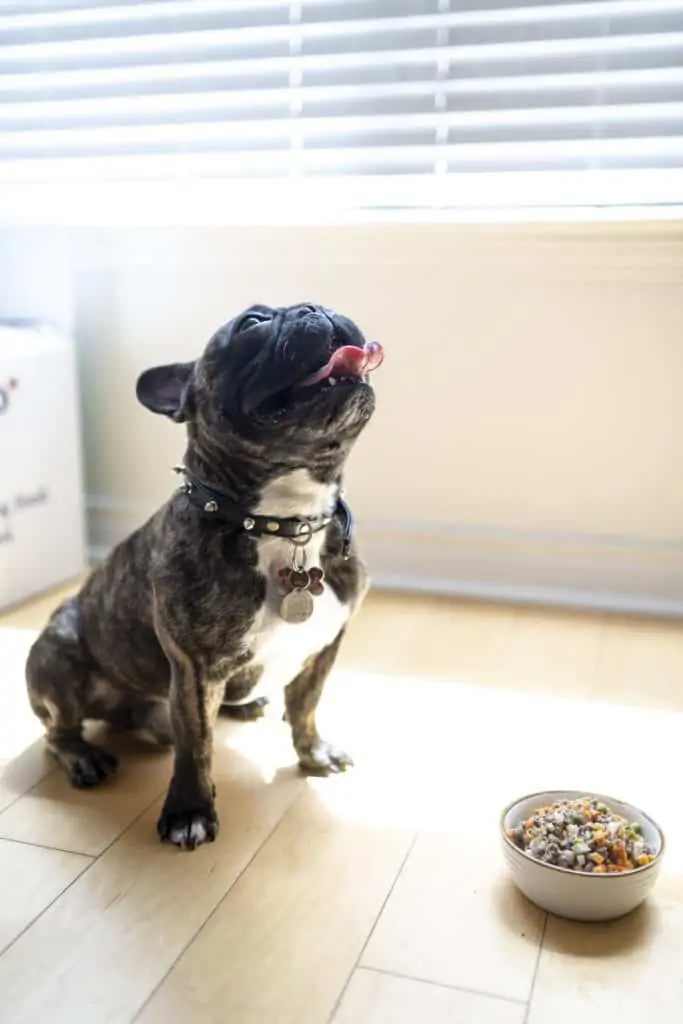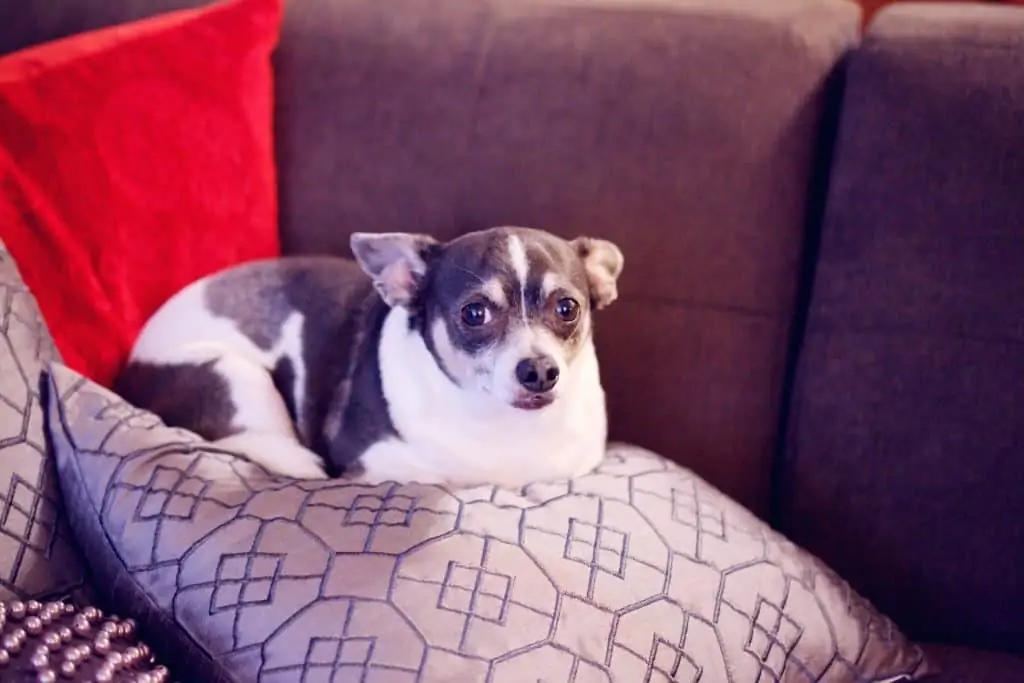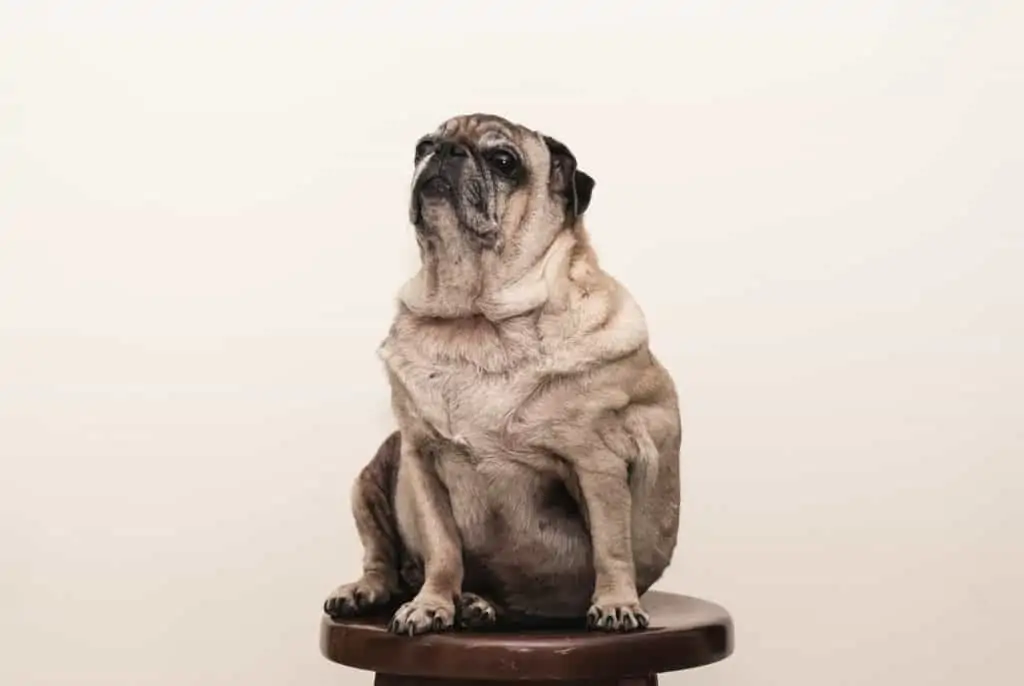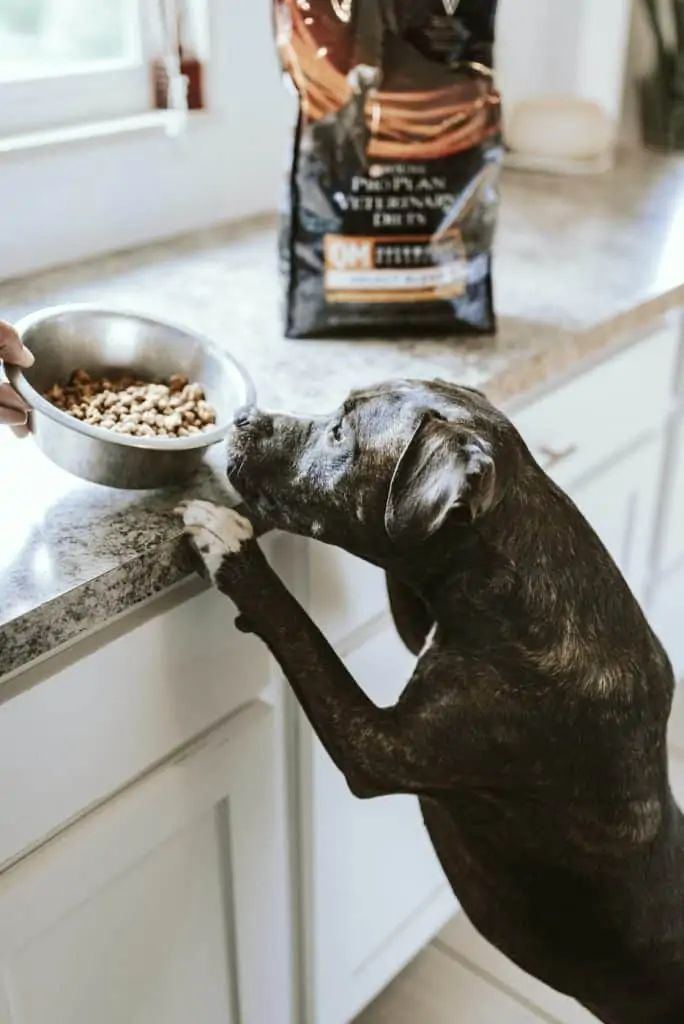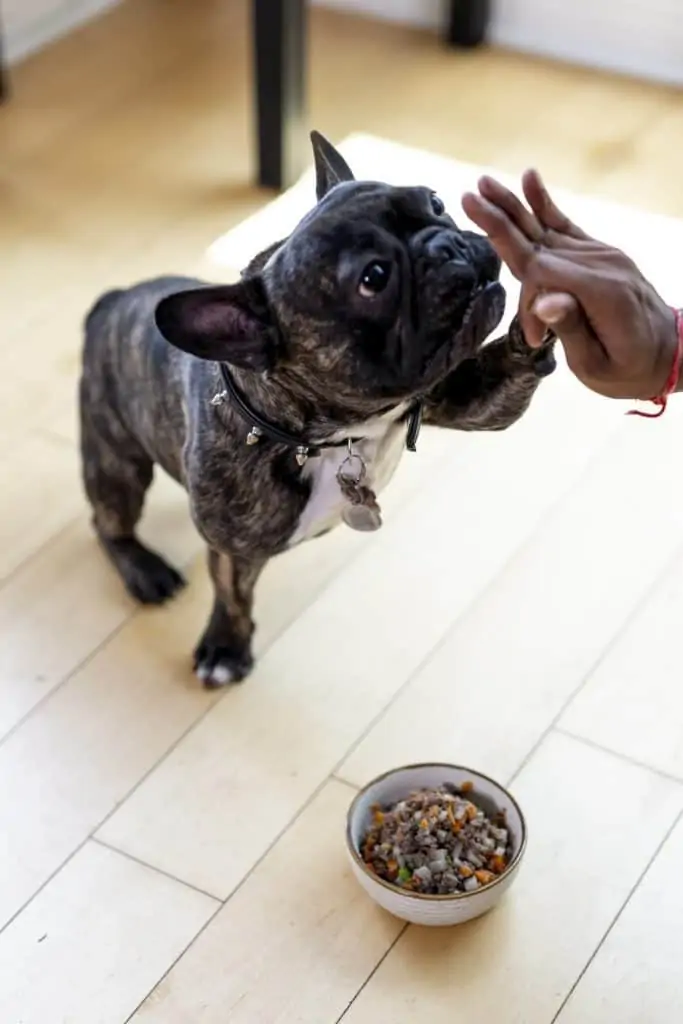Canine obesity is a serious problem in roughly half of the dogs living in the United States. That’s why we’re glad you’re here looking into “how to help my dog lose weight”.
As dog parents ourselves, we understand how difficult it can be to ignore those puppy eyes when your dog is begging for extra food or table scraps. But we also know it can be frustrating if your dog is gaining weight and you can’t figure out why.
Don’t worry – whether you’ve accidentally allowed your dog to over-indulge or his weight gain is a mystery, we’re going to help you get to the bottom of it.
But before we begin, let’s take a look at a few statistics and facts about canine obesity that every pet parent should know.
Contents
How To Help My Dog Lose Weight – Stats And Facts You Should Know
Dogs are considered obese if they are just 10% over their healthy bodyweight.
Dogs can gain weight for a number of reasons, from normal canine aging to lack of exercise to underlying medical conditions you might not be aware of.
Dogs do rely on us to care for them and meet all their needs. This includes feeding them a healthy diet, ensuring they get enough exercise, and watching for any signs of health issues or injuries.
But before you go beating yourself up over your question of how to help my dog lose weight, we should also point out that some canine obesity can be difficult to detect by the novice eye. This could attribute to the large number of dogs that are considered obese in the United States.
The good news is that you’re here. So, without further ado, here are some canine obesity facts and stats:
Being Just 10% Overweight Can Have Serious Health Implications On Your Dog
10% may not seem like a big deal, but to a dog, being 10% over the weight he should be for his age or breed should not be ignored. A little bit overweight is still overweight, so it’s important to take action as soon as you can.
It Is Estimated That Almost Half Of Companion Dogs Are Overweight In The US
A study published by Banfield Hospital in 2016 estimated that nearly 60% of dogs were considered obese. The Association For Pet Obesity and Prevention backed this finding.
At least 40 % to 45% of Overweight Dogs Are Between The Ages of 5 and 11
Like people, as dogs age they begin to slow down, and so does their metabolism. Of course, there could also be other reasons dogs over the age of 5 are so commonly found to be overweight, especially if they develop chronic conditions like arthritis, which can decrease their mobility and exercise.
Dog Obesity Costs Owners More Money
Knowing the answer to how to help my dog lose weight can actually help save you money. In fact, it’s estimated that owners with obese dogs spend up to 17% more on their pet’s healthcare and up to 25% more money on medications. Not to mention accidently overspending on food, treats and other types of lifestyle investments that could be impacting your dog’s health.
According to a study conducted by Banfield Pet Hospital in 2019, obesity can cost owners upwards of $2,000 extra, on top of other canine-related expenses, each year.
Obesity Can Be Deadly, But It’s Almost Always Preventable Or Treatable
Successful weight loss for both dogs and people, according to experts, is about 60% to 70% diet and 30% to 40% exercise.
This means that when you’re looking at how to help my dog lose weight, you’re not only looking at dietary changes, but lifestyle changes as well.
How To Help My Dog Lose Weight – What To Do Before Working On Canine Weight Loss
Before you begin working on how to help my dog lose weight, it’s important to visit your veterinarian.
First, Speak With Your Veterinarian To Rule Out Any Medical Conditions
If you’re looking into “how to help my dog lose weight” and you feel your dog truly is obese, it’s importnat to talk with your vet and have your dog examed to rule out any medical issues.
There are a few common causes to canine obesity that owners and lifestyle are the main contributors for, though in some instances, canine obesity is caused by an underlying condition.
Otherwise, the primary causes for dog obesity include improper diet, lack of exercise and free feeding.
Consider the Safest Weight Loss Plan For How To Help My Dog Lose Weight
Not all methods for how to help my dog lose weight are going to be right for your dog. Your dog’s unique health journey is going to depend on a few factors, including his age, weight, daily activity level, health issues and dietary needs.
It’s imperative not to simply reduce your dog’s caloric intake and think this will do the trick.
A good weight loss plan, and the best way to find success when looking into “how to help my dog lose weight” is going to include a few key elements and lifestyle changes, many of which should be overseen by your veterinarian or another trusted professional.
Make Sure Your Dog Really Is Overweight Before Working On How To Help My Dog Lose Weight
It can be easy to wrongly assume your dog is fit, but it can also be easy to misdiagnose your dog as overweight. This is especially true for certain breeds that may be predisposed to look heavier naturally.
Some dogs that make identifying weight issues difficult include dogs like English Bulldogs, French Bulldogs and Pugs. Unfortunately, while these dogs do naturally look a little on the chubby side, they are also more prone to obesity, according to experts.
On the flip side, there are breeds that look naturally lean, like the Greyhound or the Whippet. Of course, even dogs that are designed to be thin can be prone to gaining weight, which may have triggered you to look into “how to help my dog lose weight”.
If you’re not sure if your dog is obese or right on track, or even if your dog is too thin, it’s never a bad idea to speak with your veterinarian.
How To Help My Dog Lose Weight Safely? Tips That Work.
Wet dog food has been found to be lower in carbs and fat and higher in protein, which means it’s a recipe for success when it comes to weight loss.
First and foremost, before you change your dog’s food and buy a more expensive brand dedicated towards weight loss or weight control, it’s a good idea to consider your dog’s age, weight and activity level.
Are you feeding your dog the right dog food? Remember, puppies should be on puppy food until they are about a year old. Adult dogs should eat adult dog food until they are about seven, and from there on out your dog should eat senior dog food.
Dog foods specified for particular life stages are also designed for changing metabolism and activity levels, which in itself can help aid in weight loss
Other ways you should look into for how to help my dog lose weight include the following:
Adjust Your Dog’s Meal Schedule and Utilize Portion Control
Adjust when your dog eats, and measure his food accordingly. That said, remember that portion control will likely not work on it’s own to help your dog safely lose the extra weight.
Consider Investing In A Higher Quality Dog Food
Nutrition is a very important part of how to help my dog lose weight, but canine weight loss or diet foods are not always the answer. Sometimes, the answer lies in simply finding a higher quality food that is better aligned with your specific dog.
Consider Swapping Kibble For Wet Food
Changing your dog’s kibble over to wet dog food or even replacing half of your dog’s kibble with canned food can aid in your quest for how to help my dog lose weight. That’s because dog foods that are canned usually have fewer calories and carbs while still having higher protein.
Make Sure Your Dog Exercises!
Exercise is incredibly important if you want to know how to help my dog lose weight. But keeping your dog active does so much more than ensure he’s not obese. A good amount of exercise each and every day can also:
- Reduce your dog’s risk of heart disease
- Lower your dog’s cholesterol levels
- Reduce anxiety, depression, boredom and stress
- Reduce behavioral issues (related to the above)
- Reduce risks of some types of cancers
- Increase the immune system
- Slow aging and advancing bone loss
- And help keep muscles and joints healthy
What Are The Risks Of Obesity In Dogs?
Overweight dogs are more at risk for a long list of serious and sometimes deadly diseases.
There are different levels to the dangers of canine obesity, but it’s important to point out here that all canine obesity can come with risks. As we mentioned above, a dog that is 10% over his average body weight for his size, breed and age is considered obese, and this can lead to a number of health risks down the road.
In fact, the VCA published a list of certain health risks in overweight dogs that have been scientifically linked to obesity. These health risks include:
Different Types Of Cancers
Studies have found that obesity in dogs may be linked to an increased risk of lymphoma and osteosarcoma. This included a risk of mammary tumors, mast cell tumors and transitional cell tumors.
Diabetes
According to a study conducted in 2015 on nationwide insurance reviews of pet claims, diabetes is the sixth most common obesity-related disease in dogs. Diabetes is a condition that, amongst other things, affects the levels of blood sugar in your dog’s body. This can lead to a multitude of symptoms, some of which can be deadly if left untreated.
Diet plays a big role in contributing to or even sometimes causing diabetes. If you think your dog has diabetes, it’s important to speak with your veterinarian right away.
Hypertension
Hypertension in dogs means the same thing as it does for people – it’s another way of saying high blood pressure. Blood pressure is exactly what it sounds like – it is the pressure that blood puts on the walls of the arteries around the heart as it pumps.
Dogs with hypertension are at an increased risk of serious heart issues, nervous system issues, blindness and more. Just like diabetes, hypertension can be caused by or exasperated by canine obesity, and it’s important to keep this in mind when looking at “how to help my dog lose weight”.
An Overall Average Decrease In Lifespan
It’s been found that obese dogs can have up to two years shaved off of their life thanks to disease and compliations brought on by being overweight. This may not seem much to human beings, who live an average of 80 or more years, but for a dog, who has an average lifespan of just 15 years, one year to two years is a lot of time lost.
Osteoarthritis and Degeneration of the Bones and Joints
The more weight your dog carries, the harder it is for his bones and joints. This can expedite the aging process for your dog and make him behave and feel older than he really is.
And while the above health issues are important for you to consider when researching “how to help my dog lose weight”, you should also note that there are other health issues commonly found to be associated with canine obesity.
Other Health Issues Related To Canine Obesity Include But Are Not Limited To:
- Bladder Stones
- Complications With Anesthesia
- Heat Intolerance
- Immune Dysfunction
- Heart Disease
- And Lung Disorders
Once you learn that there are so many serious health issues found to be related to obesity in dogs, it can be tempting to rush into finding a solution for your dog’s weight issues. Still, when you’re looking into how to help my dog lose weight, it’s equally important to look into how to do so safely.
How To Identify If Your Dog Is Overweight
It’s not always easy to tell if your dog is overweight. This Pug is clearly obese, but other dogs hold their weight differently.
Do you know how to tell if your dog is overweight? According to the American Kennel Club, there are a few ways to go about it.
Give Your Dog A Good Overview
We want you to take this literally. One of the most efficient ways to determine if your dog is in ship shape or overweight on the spot is to stand over your dog and view him from above. Nearly all dogs, regardless of breed, age, mix or size, should have a defined waist that becomes more lean as it reaches the hips.
If you’re standing over your dog and his middle section is more oval shaped without any defined waist, chances are it’s a good thing you are researching how to help my dog lose weight.
Feel Around For Excess Fat
When dogs gain weight, they may store this weight in excess “fat pads”, especially between their legs and on the tops of their hips. If you feel a little bit of a doggy muffin top, it’s time to come up with a plan for how to help my dog lose weight.
Take Cues From Your Dog’s Ribs
You don’t want your dog to be so lean that his skin is stretched out over his ribs prominently, as this could mean your dog is too thin. But you do want to be able to feel your dog’s ribs without pressing too hard.
Run your hands over your dog’s body near his sides, and see if you can determine where his ribs are easily through his skin. If you can’t feel them without some prodding, your dog is probably a little too plump.
Watch Your Dog’s Behavior
As we mentioned briefly above, weight gain in dogs can lead to bone and joint issues, which can make your dog look and feel older than he is. If your dog has slowed down more than he should have for his age, if there is a waddle to his walk, or if he becomes breathless during exercise, it’s time to contact your vet about how to help my dog lose weight.
How To Help My Dog Lose Weight – What NOT To Do
Avoid free-feeding your dog. Allowing him to eat whenever he wants, even when he’s not hungry, is a quick road to weight gain.
Now that we’ve answered your question of how to help my dog lose weight, it’s time to talk about what NOT to do when putting Fido on a weight loss regime.
First, Do Not Free-Feed Your Dog
Free feeding is when owners leave their dog’s food bowl filled with food 24/7. While this can work for some unique pets, most dogs will overeat so long as food is available to them. Instead, consider your dog’s breed, size, age, and activity level, and feed him accordingly.
Most dogs do well with a meal schedule of two to four meal times per day, with portions being measured out as specified by a professional.
Do Not Focus Only On Reducing Portions
As we mentioned above, reducing portions can help aid in weight loss, but it can also lead to serious health issues if portion control is not implemented correctly.
On its own, portion control may lead to malnourishment in your dog over time. This is not only dangerous, but it completely defeats the purpose of you trying to keep your dog healthy.
Do Not Rely On The Feeding Instructions On The Back Of Your Dog Food’s Packaging To Determine Portion Control
Every dog is unique, and what works for one may not work for another. Feeding portions on average dog food packaging are relatively broad, and not customized for your specific dog. If you’re researching how to help my dog lose weight and looking to the back of food packages for guidance on feeding, this could be the problem.
How much food your dog eats should depend on a few different factors, including his age, weight, activity level, overall health, and even whether or not your dog has been spayed or neutered.
This is again another reason why working with your vet when looking at how to help my dog lose weight is the most effective way to establish a weight loss plan for your four-legged friend.
And that brings us to our next point.
Do Not Begin A Weight Loss Regime Without Speaking With Your Vet
We’ve mentioned it a few times and we’ll mention it some more.
When looking up “how to help my dog lose weight”, remember that any advice you come across online, even this advice, should be discussed with your veterinarian. Your veterinarian is your best source of information when it comes to your dog’s overall health and vitality, and especially when it comes to weight loss and management.
Are You Picking A Diet Dog Food? Here’s What To Look For
Are you looking into helping your dog lose a few pounds? Give yourself a high five and check out our favorite dog foods to help maintain a healthy weight.
Not all diet dog foods are made equally, and it’s important to have some basic understanding of what your dog needs in a diet dog food before you invest. So, if you’re wondering how to help my dog lose weight, you’ll want to keep an eye out for the below types of dog foods.
A Dog Food With Above Average Amounts of Real Meat Protein
Higher protein not only helps to make your dog feel more satisfied and less hungry after meals, it also reduces muscle deterioration during their weight loss adventure.
A Dog Food With Below Average Amounts Of Fats
The average fat content in dog food can vary and depend on a few factors, so it can be difficult to tell what is right for your dog just based on numbers.
However, according to the US National Academies, adult dogs should consume at about 12% of fat in their daily diets. For dogs that eat dry food, this means that about 5% of that kibble should contain fat.
The best way to determine if you are getting the right dog food for your dog is to speak with your vet or a canine nutritionist. This is especially true if your dog is overweight and you’re looking at “how to help my dog lose weight’.
A Dog Food With Below Average Amounts Of Calories
A dog food with a lower amount of calories and higher amounts of protein will allow your dog to eat more without gaining excess weight. This will also help keep his mealtimes more routine for him, which can reduce stress and help encourage a healthy relationship between your dog and food.
Are you not sure which dog food would best aid in your quest for “how to help my dog lose weight”? We have listed some of our favorite brands for you to consider below.
Merrick Real Meat Healthy Weight Recipe Dog Food
No products found.
We like Merrick’s healthy weight dog food above because it’s not a “diet” dog food but instead a dog food that promotes healthy digestion and weight control, amongst other things. This dog food is a high protein dog food, which allows your dog to feel fuller longer without consuming more calories.
It also contains healthy fats and other nutrients your dog needs including vitamins, minerals, carbs, fatty acids and fiber.
Best of all, this dog food helps provide dogs with more energy, which can increase what they get out of their daily exercise routines.
Blue Fit and Healthy Wet Dog Food
No products found.
Another dog food we like when it comes to answering “how to help my dog lose weight” is a wet food by Blue Buffalo. This is a trusted brand that is known for its high quality of food, and we like that this product is specifically geared for natural and healthy weight as opposed to weight loss in particular.
Like Merrick’s dog food above, this dog food for healthy weight is made with quality ingredients and even includes fiber to help enhance digestion. It’s also free of byproducts, additives, fillers, corn, soy, wheat or gluten – all of which can exacerbate obesity issues in sensitive dogs.
And while we do like this dog food and Merricks’ dog food as well, we still want to remind you that a veterinarian or a professional canine nutritionist is your best source of information when it comes to you learning “how to help my dog lose weight.”
Keep us posted on your dog’s weight loss journey.
Best of luck and thanks for reading!
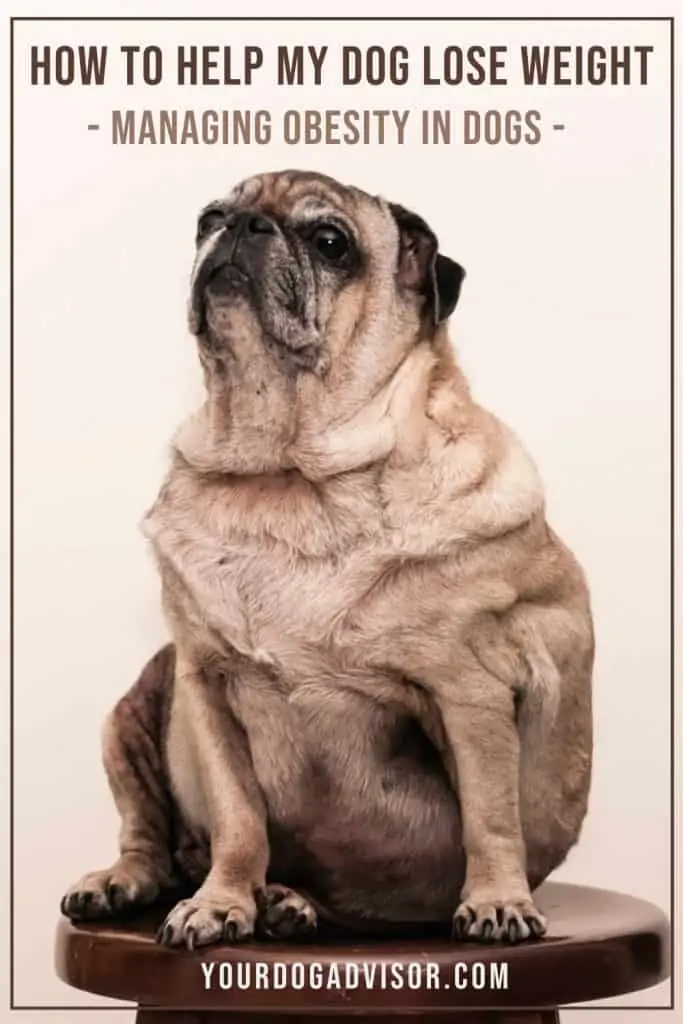

Jen Jones is a professional dog trainer and behavior specialist with more than 25 years of experience. As the founder of ‘Your Dog Advisor’ and the ‘Canine Connection’ rehabilitation center, she applies a holistic, empathetic approach, aiming to address root causes rather than merely treating symptoms.
Well known for her intuitive and compassionate approach, Jen adopts scientifically-proven, reward-based methods, encouraging positive reinforcement over punishment. Jen specializes in obedience training, behavior modification, and puppy socialization. Her innovative methods, particularly in addressing anxiety and aggression issues, have been widely recognized. Jen has worked with many of the world’s leading dog behaviorists and in her free time volunteers with local animal shelters and rescue groups.

